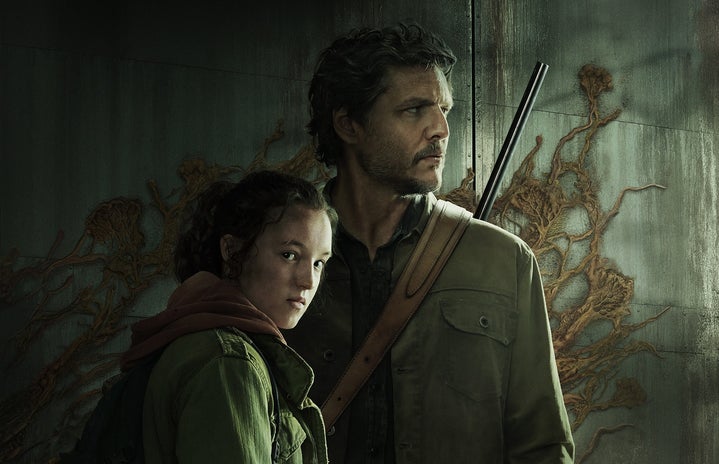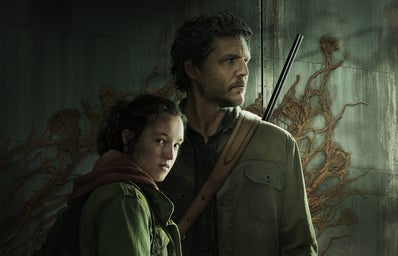Content warning: This article contains spoilers
Since its release earlier this year, HBO’s The Last of Us continues to grow in popularity episode after episode, thanks to both the popularity of the original video game and the newly done, intriguing narrative with its talented cast.
As someone who’s played the game multiple times, I was eager and a little nervous to watch this show. The trailers looked phenomenal, but I was worried it’d lose touch with the original story, as many adaptations tend to do (looking at you, Percy Jackson). Needless to say, I was not disappointed. From the set design and cinematography to the acting, The Last of Us is able to honour the game’s narrative while implementing its own charm and stories through its new medium.
The story of The Last of Us is one of the best in any video game ever. With the evolution of Ellie and Joel’s relationship, the fates of the secondary characters, and both the beauty and terror of the world around them, there is an abundance of emotion and intrigue that keeps players returning to the game despite their knowledge of the story.
Characters and Performances
Because of Ashley Johnson and Troy Baker’s phenomenal performances as Ellie and Joel in the game, it’s only fair that the show’s performances pack as much punch and emotion — and they surely delivered. Throughout each episode, we get great performances from both Bella Ramsey (Ellie) and Pedro Pascal (Joel), who can stay true to their characters’ roots while still bringing their own flare.
Both do a fantastic job of portraying the characters’ emotions subtly and grandly. For instance, Joel’s tearful and heartfelt vulnerability when talking to Tommy about failing the people he cares about versus that small, horrified sound Ellie makes when Henry shoots himself. The magnitude of both performances is very different, yet the weight they hold and the impact they leave on the audience are equally poignant.
Interestingly enough, these two moments—which are two of the most memorable moments thus far, in my opinion—don’t appear in the game. In the game, Joel sharply demands Tommy to take Ellie, claiming it’s so she can successfully make it to the Fireflies. When Henry points the gun at himself, the camera cuts to black, not showing players Ellie’s reaction. Perhaps this is why these scenes stuck out to me in the show — we’re shown something new; perspectives and sides of the characters that we were not given in the game.
Joel’s Emotional Side
For me, one of the most striking differences between the game and its adaptation is Joel’s character. Joel is well-known for being a ruthless killer who lets nothing get in his way; a closed-off “shoot first, ask questions later” type. His character in the show, however, is far softer and more vulnerable — and that isn’t necessarily a bad thing.
Made especially noticeable in episode six, Pascal’s portrayal of Joel shows far more emotion and less savagery. In a single speech, he tells us about his hesitation to kill and the weight of all that he’s lost to show Tommy his deep care for Ellie and his desperation for Tommy to take her. In the game, Joel is hardly this open (since anger is typically his way of masking the rest of his emotions and vulnerabilities), leaving audiences to pick up on his feelings through subtle actions and dialogue.
As mentioned, when Joel talks to Tommy in the game, he covers his true worries about becoming attached to Ellie by angrily telling Tommy that he owes him and that he can successfully get her to the Fireflies, whereas Joel cannot.
Set Design and Cinematography
Another great aspect of the show is the sets. They are phenomenal, many of them absolutely blowing me away; props to the set design team because they look exactly like the game’s settings.
The underground classroom that Joel and Ellie explore with Henry and Sam is uncannily similar, from the house rules written on the wall to the drawing of a soccer net with which Ellie and Sam play. Even Jackson looks exactly like it does in The Last of Us Part II, with its quaint buildings and houses all lined up, stables and families all together despite the apocalypse.
Related to this, the show’s cinematography brilliantly highlights the beauty of a lost world. The prominent use of wide shots allows us to explore the setting (as we would be able to do in the game) and simultaneously bring focus on Ellie and Joel, two people alone in a big, empty world with nothing but each other.
Evoking Sympathy
Because of the story’s new medium, it has enabled a greater sympathy for other characters in the story. In the game, you play as either Ellie or Joel and are expected to kill everyone in sight in order to progress; these people are just NPCs (non-playable characters), unimportant to us. The show, however, gives these characters more life to show us that they are, in fact, people. Specifically, I’m thinking about Bryan from episode four, who begs for his life after Ellie shoots him.
I was wincing the entire time. I felt so bad for the guy; the pain in his voice and his frantic words trying to get Ellie and Joel to spare him were gut-wrenching.
This is a very important aspect of the show. While there are some emotions in the NPCs that we must kill in the game (sometimes they beg for their lives as well or scream in pain), none of them left as much of an impact on me as Bryan. Bryan’s brief screen time and death were enough to demonstrate the brutality of Joel and Ellie’s world and put more weight on their actions.
We see that, however necessary it may be, the people they kill are people. As obvious as that may sound, it’s not always… well, obvious. With so much killing and death, The Last of Us wanted to make sure we don’t become desensitized to them or take any of it lightly. With characters like Bryan, they ensure we don’t.
Nods to The Last of Us Part II and Season 2
Something that fans of the video game would’ve noticed was the nods to The Last of Us Part II and the show’s eventual second season. The biggest hint, of course, was the girl that stares at Ellie while she’s eating, which many fans (including myself) are convinced is Dina, Ellie’s girlfriend in Part II. We also see Ellie meeting a pony named Shimmer, who becomes her horse and prevalent travel companion in the game’s sequel. Finally, there’s the use of A-ha’s “Take On Me” when Ellie and Riley are going down the escalator in the mall — the same song that Ellie sings to Dina in Part II.
All these little details may seem unimportant, but, knowing the story of Part II, these allusions are all vital to Ellie’s story.
HBO’s The Last of Us is a brilliant homage to the video game, which manages to add its own spin to the narrative. With all the emotion, beauty and horror that come with each episode, I can’t wait to see what the rest of the show will bring to an already beloved story.


